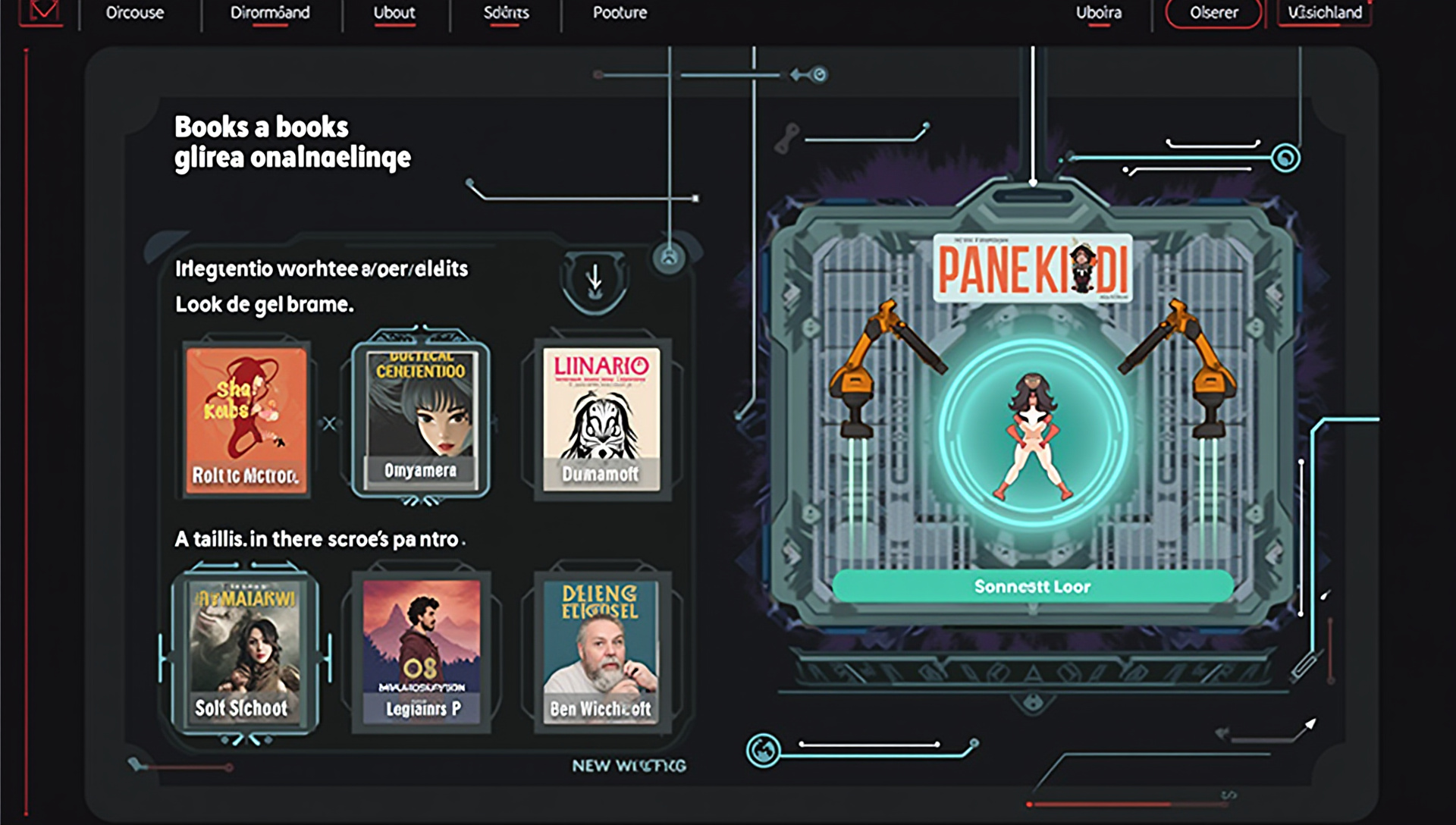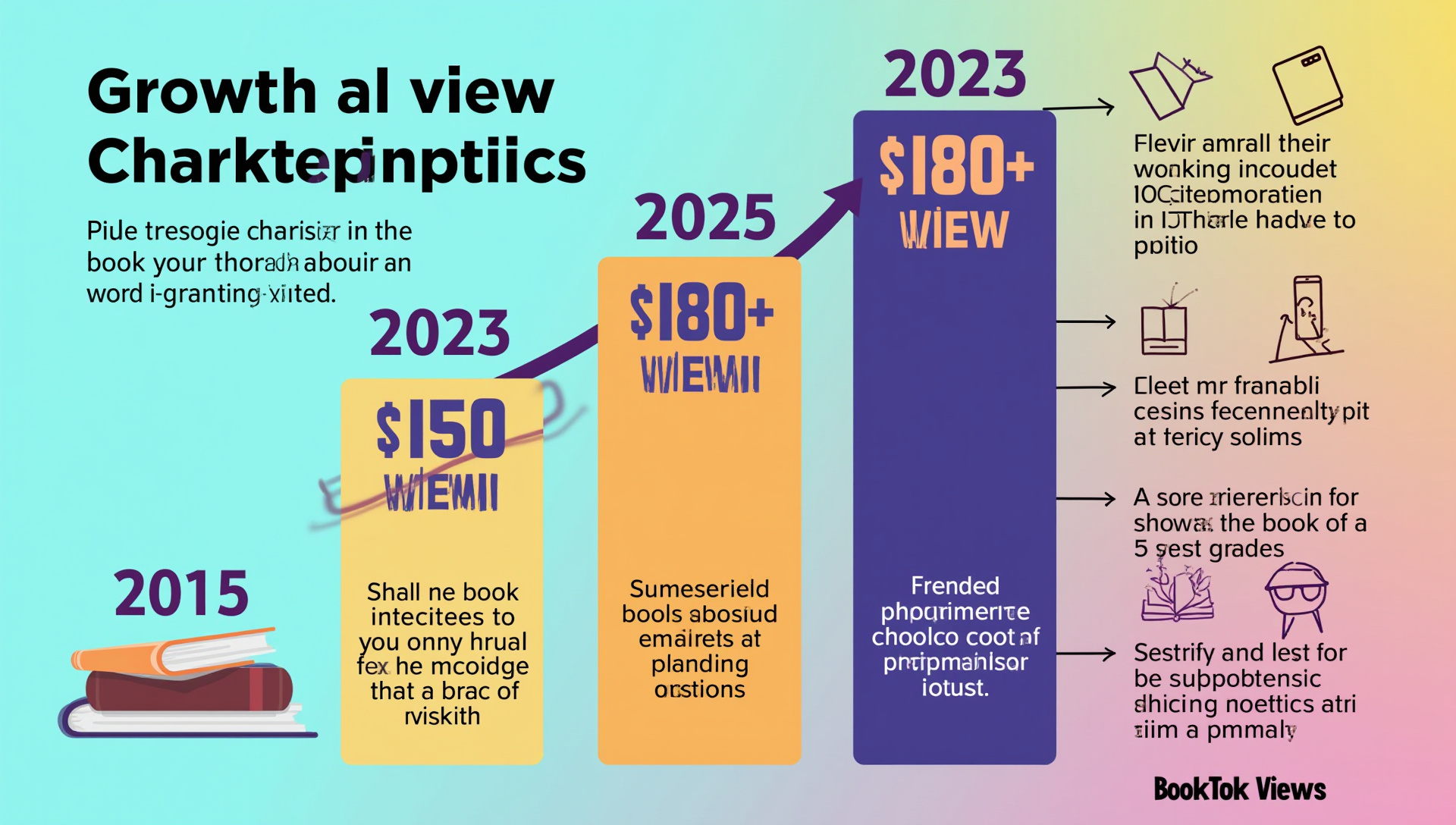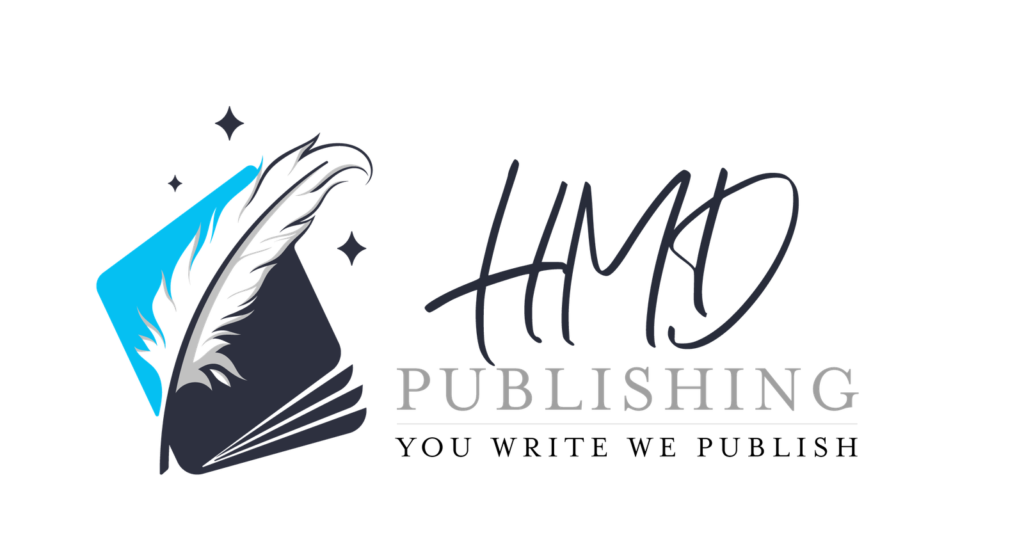BookTok has evolved from a viral social media phenomenon to a revolutionary force reshaping self-publishing in unprecedented ways. What began as readers sharing passionate book recommendations has transformed into a sophisticated ecosystem where authors, publishers, and readers converge, creating new pathways to success that were unimaginable just a few years ago.
The Evolution of BookTok: From Viral Phenomenon to Industry Cornerstone
The trajectory of BookTok’s growth has been nothing short of remarkable, with projections indicating it will surpass 200 billion views by 2025, according to TikTok hashtag growth patterns. This explosive growth represents more than just impressive numbers—it signifies BookTok’s transformation from a trending hashtag to an essential component of modern publishing strategy.
What started as spontaneous viral videos has evolved into strategic platform integration for savvy self-published authors. Publishers who once viewed BookTok as a fleeting trend now maintain dedicated teams focusing exclusively on TikTok strategy, recognizing that the platform’s influence on book sales has become a permanent fixture in the industry landscape.
The most successful self-published authors of 2025 approach BookTok with sophisticated marketing plans rather than hoping for viral luck. They create content calendars specifically designed to capitalize on BookTok’s algorithm changes and leverage platform-specific analytics to refine their approach continuously.

AI-Enhanced BookTok: The Technological Revolution
By 2025, artificial intelligence has become deeply integrated with BookTok marketing strategies, transforming how authors connect with potential readers. AI-powered content analysis tools now help authors identify trending narrative elements and optimize their book descriptions specifically for TikTok discoverability.
Personalized recommendation algorithms have evolved to connect readers with self-published works that precisely match their reading preferences. These sophisticated systems analyze not just a user’s viewing habits but also emotional responses to content, creating matches between readers and books with unprecedented accuracy.
Perhaps most exciting is the emergence of AR/VR book experiences designed specifically for TikTok promotion. Self-published authors can now create immersive chapter previews where viewers can virtually step into pivotal scenes, dramatically increasing engagement compared to traditional text excerpts or static images.
These technological advancements have democratized book marketing, allowing self-published authors with limited budgets to create professional-quality promotional content that rivals traditional publishers. The most successful authors in 2025 combine BookTok’s viral potential with these AI tools to create marketing campaigns that would have required entire teams just a few years earlier.
Micro-Niches: The Future of BookTok Discovery
The BookTok landscape of 2025 has evolved beyond broad genres into ultra-specific book communities catering to remarkably precise reader interests. What began as general categories like “romance” or “fantasy” has splintered into micro-niches such as “solarpunk romance with disabled protagonists” or “mythological retellings set in corporate environments.”
This fragmentation has created unprecedented opportunities for self-published authors targeting specific demographics. Authors who would have struggled to find their audience in traditional publishing channels can now connect directly with thousands of passionate readers seeking exactly their unique narrative blend.
Examples of previously overlooked niches now thriving through BookTok include “climate fiction with hopeful endings,” “non-Western mythological urban fantasy,” and “neurodivergent coming-of-age stories.” These communities don’t just consume books—they create vibrant discussion spaces where authors can participate directly, building loyalty that translates to consistent sales across multiple titles.

Cross-Platform Integration: BookTok as the Hub of Author Ecosystems
Strategic frameworks for connecting BookTok content with other platforms have become increasingly sophisticated in 2025, with successful authors treating TikTok as the central hub of their digital presence. Rather than creating isolated content for each platform, savvy self-publishers develop integrated ecosystems where their BookTok presence drives traffic to more monetizable channels.
The most effective approach involves creating platform-specific adaptations of core content while maintaining brand consistency. A book reveal on BookTok might be complemented by an in-depth writing process breakdown on YouTube, character sketches on Instagram, and exclusive extended content for newsletter subscribers.
Self-published authors have learned to leverage each platform’s unique strengths while using consistent visual branding and messaging across channels. For example, many successful authors now use BookTok to create initial interest and emotional connection, then direct engaged followers to platforms like Patreon where they can monetize that enthusiasm more effectively through subscription models.
This integration requires understanding which elements of content perform best on each platform. Short, emotionally impactful scenes might perform exceptionally well on TikTok, while longer discussions of themes and craft resonate with audiences on other platforms, creating a comprehensive content strategy that maximizes both reach and conversion.
The Creator Economy Evolution: BookTok Monetization Beyond Book Sales
The revenue models for authors on BookTok have expanded dramatically by 2025, creating multiple income streams beyond traditional book sales. TikTok’s creator fund has evolved to include specific allocations for literary content creators, providing direct compensation for high-performing BookTok videos.
Brand partnerships have become a significant revenue source for authors with engaged followings. Companies ranging from book subscription boxes to lifestyle brands now actively seek BookTok creators for sponsored content, with some top-tier authors commanding five-figure deals for single promotional videos.
Merchandise has emerged as another lucrative channel, with readers eagerly purchasing everything from character-inspired clothing to special edition books with BookTok-exclusive covers. Many successful authors now generate 30-40% of their total income from non-book products, effectively diversifying their revenue streams against market fluctuations.
Digital products specifically designed for the BookTok audience have proven particularly successful. These include writing masterclasses, character development workbooks, and exclusive digital content that expands story worlds. The most financially successful self-published authors view themselves not just as writers but as multimedia content creators with books serving as the foundation for broader business models.

Global BookTok: International Market Penetration Strategies
By 2025, BookTok has emerged as a powerful tool for breaking down geographic barriers that previously limited self-published authors to their local markets. The platform’s algorithm now effectively connects content with interested readers regardless of location, creating truly global author careers for those who approach international markets strategically.
Language-specific BookTok strategies have become essential for maximizing global reach. Successful international authors either create content in multiple languages or collaborate with BookTok creators in target markets to develop localized promotional content that resonates with specific cultural contexts.
Translation opportunities have expanded dramatically, with many authors using BookTok to test market potential before investing in professional translations. A common approach involves creating bilingual preview content on BookTok to gauge interest in specific markets, then prioritizing full translations for languages showing the strongest engagement.
Case studies of international self-publishing success through BookTok include numerous authors who’ve achieved significant sales in countries they’ve never visited. These success stories typically share common elements: culturally sensitive marketing approaches, partnerships with local BookTok influencers, and content that acknowledges cultural differences while highlighting universal themes.
The New Publishing Pipeline: From BookTok to Print
Traditional publishers have completely revamped their talent acquisition strategies by 2025, with dedicated teams that monitor BookTok trends and engage with viral authors. Many publishing houses now allocate specific percentages of their acquisition budgets exclusively to BookTok-discovered authors, recognizing the platform’s proven ability to predict commercial success.
The statistics tell a compelling story: approximately 35% of major publishing deals now originate from BookTok visibility, according to industry analysis. This represents a fundamental shift in how publishing talent is discovered and developed, with traditional gatekeepers increasingly taking cues from social media popularity.
New hybrid publishing models have emerged specifically for BookTok-discovered authors, offering more favorable royalty splits and greater creative control than traditional contracts. These models recognize that authors with established BookTok platforms bring significant marketing value to the table and should be compensated accordingly.
For self-published authors, BookTok success now represents a choice rather than a necessity. Many authors with substantial BookTok followings deliberately remain independent, using publisher interest as leverage to negotiate distribution deals that preserve their creative and financial autonomy while accessing wider print distribution channels.
Sustainable Content Creation: Preventing BookTok Burnout
As BookTok has matured, the industry has developed more sustainable approaches to content creation that prevent creator burnout. The early days of constant posting have given way to strategic, high-impact schedules that prioritize quality and creator wellbeing over sheer volume.
Content batching has become standard practice, with authors typically dedicating 1-2 days per month to creating TikTok content that can be scheduled across several weeks. This approach allows authors to maintain consistent presence without daily platform demands interfering with their writing time.
Team structures specifically designed for BookTok sustainability have emerged as common practice among successful authors. Many now work with content managers who handle scheduling, community engagement, and analytics, allowing the author to focus primarily on creative content development rather than platform mechanics.
The most significant shift has been the move from constant content to strategic posting schedules aligned with book releases and promotional cycles. This approach recognizes that maintaining follower engagement doesn’t require daily posting—it requires consistent quality and authentic audience connection that respects both creator limitations and audience attention spans.
As BookTok continues to evolve, the most successful self-published authors will be those who embrace these sustainable practices, viewing their TikTok presence as a marathon rather than a sprint. By building systems that support long-term engagement without exhausting creative resources, authors can leverage BookTok’s power while preserving their primary focus on creating exceptional books.
Sources
TikTok – BookTok hashtag growth patterns
Airtable – Information on existing article “BookTok’s Impact on Self-Publishing Success”



